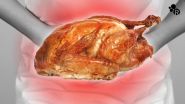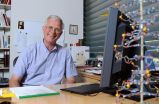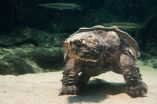(Press-News.org) DENVER--Nov. 24, 2014-- Four years ago, a bulldozer operator turned over some bones during construction at Ziegler Reservoir near Snowmass Village, Colorado. Scientists from the Denver Museum of Nature & Science were called to the scene and confirmed the bones were those of a juvenile Columbian mammoth, setting off a frenzy of excavation, scientific analysis, and international media attention. This dramatic and unexpected discovery culminates this month with the publication of the Snowmastodon Project Science Volume in the international journal Quaternary Research.
Fourteen papers by 47 authors from the United States and abroad collectively represent "a new benchmark for understanding climate change in the American West," said paleontologist Dr. Ian Miller, Snowmastodon Project co-leader and chair of the Museum's Earth Sciences Department.
Project co-leader and former DMNS chief curator, Dr. Kirk Johnson, and several scientists from the U.S. Geological Survey and academic institutions around the world contributed articles to the journal.
"Nothing beats pulling fossils out of the ground," said project scientist Dr. Jeff Pigati of the U.S. Geological Survey, "but the site also lets us see what the Colorado Rockies were like during a period of time that we simply couldn't reach before the discovery."
The Snowmastodon site was an ancient lake that filled with sediment between 140,000 and 55,000 years ago preserving a series of Ice Age fossil ecosystems. Particularly fortuitous is the high-elevation locale, providing first-time documentation of alpine ecosystems during the last interglacial period between about 130,000 and 110,000 years ago. Because scientists were able to collect and study such a wide range of fauna and flora--from tiny specks of pollen to the bones of giant mastodons--the site emerged as a trove of information that Miller said will inspire future research for years to come.
"This project was unprecedented in its size, speed, and depth of collaboration. The science volume now moves beyond the pure excitement of the discovery to the presentation of its hard science and its implications for understanding the biological and climate history of the Rocky Mountain region," said Johnson, now the Sant Director of the Smithsonian's National Museum of Natural History.
Papers in the special edition focus on impacts of climate change, then and now. The site's ecosystems--plants, insects, and animals combined--varied dramatically in response to climate change.
"In other words, turn the climate dial a little and the ecosystems change considerably. We were also surprised to find that certain periods in the record that seem to be cool elsewhere in North America were quite warm in the central Rockies," said Miller. "The implication is that alpine ecosystems respond differently to climate change than other, lower elevation ecosystems. These new results have huge implications for predicting present-day climate change in Colorado and beyond."
Usually fossil sites preserve only snapshots in time, which are then pieced together to understand past time periods. By contrast, the Snowmastodon site captures a nearly continuous 85,000-year time span. As a result, the site provides the best-known record of life and climate at high elevation anywhere in North America.
During a total of 69 days in 2010 and 2011, the Museum mobilized one of the largest fossil excavation efforts ever, recovering more than 5,000 large bones and 22,000 small bones representing roughly 50 different species. The site is most notable for containing the remains of at least 35 American mastodons, representing both genders as well as a variety of ages, from calves to full-grown adults.
"We had no idea that the high Rockies were filled with American mastodons during the last interglacial period," Miller noted.
While the spectacular array of Ice Age animals initially drew scientists to the site, the opportunity to understand the world that they inhabited proved to be a powerful draw as well. "Scientists from around the world donated countless hours and resources toward the project," said Pigati. "For so many of them to come together and reconstruct a world that no longer exists in such incredible detail, well that's just a dream come true."
INFORMATION:
About the Denver Museum of Nature & Science
The Denver Museum of Nature & Science is the Rocky Mountain Region's leading resource for informal science education. Our mission is to be a catalyst and ignite the community's passion for nature and science. The Museum envisions an empowered community that loves, understands, and protects our natural world. As such, a variety of engaging exhibits, discussions, and activities help Museum visitors celebrate and understand the wonders of Colorado, Earth, and the universe. The Museum is located at 2001 Colorado Blvd., Denver, CO, 80205. To learn more about the Museum, visit dmns.org or call 303.370.6000. Many of the Museum's educational programs and exhibits are made possible in part by the citizens of the seven-county metro area through the Scientific & Cultural Facilities District. Connect with the Museum on Facebook, Twitter, and Instagram.
Conventional treatment seeks to eradicate cancer cells by drugs and therapy delivered from outside the cell, which may also affect (and potentially harm) nearby normal cells.
In contrast to conventional cancer therapy, a University of Cincinnati team has developed several novel designs for iron-oxide based nanoparticles that detect, diagnose and destroy cancer cells using photo-thermal therapy (PTT). PTT uses the nanoparticles to focus light-induced heat energy only within the tumor, harming no adjacent normal cells.
The results of the UC work will be presented at the ...
Scientists from the US Department of Energy's Lawrence Berkeley National Laboratory (Berkeley Lab) have learned new details about how an important tumor-suppressing protein, called p53, binds to the human genome. As with many things in life, they found that context makes a big difference.
The researchers mapped the places where p53 binds to the genome in a human cancer cell line. They compared this map to a previously obtained map of p53 binding sites in a normal human cell line. These binding patterns indicate how the protein mobilizes a network of genes that quell tumor ...
Researchers at UC San Francisco have identified patterns of genetic activity that can be used to diagnose endometriosis and its severity, a finding that may offer millions of women an alternative to surgery through a simple noninvasive procedure.
The study is online in the journal Endocrinology.
"This promising molecular diagnostic approach would not have been possible without advances in genomics and bioinformatics," said senior author Linda Giudice, MD, PhD, distinguished professor and chair of obstetrics, gynecology and reproductive sciences at UCSF.
"Importantly, ...
A protein that stimulates the brain to awaken from sleep may be a target for preventing Alzheimer's disease, a study by researchers at Washington University School of Medicine in St. Louis suggests.
In recent years, scientists at Washington University have established links between sleep problems and Alzheimer's. For example, they have shown in people and in mice that sleep loss contributes to the growth of brain plaques characteristic of Alzheimer's, and increases the risk of dementia.
The new research, in mice, demonstrates that eliminating that protein - called orexin ...
WASHINGTON, Nov. 24, 2014 -- The season of giving is often also the season of over-indulging at the dinner table. As Thanksgiving approaches, Reactions takes a look down at our stomachs to find out what happens when you overeat. Put on your "eating pants" and enjoy the video here:
Subscribe to the series at Reactions YouTube, and follow us on Twitter @ACSreactions to be the first to see our latest videos.
INFORMATION:The American Chemical Society is a nonprofit organization chartered by the U.S. Congress. With more than 161,000 members, ACS is the world's largest scientific ...
How does glass transition from a liquid to its familiar solid state? How does this common material transport heat and sound? And what microscopic changes occur when a glass gains rigidity as it cools?
A team of researchers at NYU's Center for Soft Matter Research offers a theoretical explanation for these processes in Proceedings of the National Academy of Sciences.
Our understanding of glasses as they change state is relatively limited. This is because, unlike other materials such as metals, their constituent particles--which can be as small as a billionth of a meter ...
People who see their group as more homogenous - for instance, the more one thinks Americans are similar to each other - are less likely to be influenced by external terrorist threat alerts, according to research from NYU's Steinhardt School of Culture, Education, and Human Development.
"Among people who viewed their group to be homogeneous, external threat did not translate to higher perceived threat, and they did not influence beliefs about the legitimacy of the U.S. military intervention in Iraq," said study author Rezarta Bilali, assistant professor of psychology and ...
ANN ARBOR--The medical community may be inadvertently creating a new generation of illegal, recreational drug users by prescribing anti-anxiety or sleep medications to teenagers, say University of Michigan researchers.
Teens prescribed anxiety or sleep medications are up to 12 times more likely to abuse those drugs than those who had never had a prescription, either by using someone else's prescription pills or to get high or experiment, according to a study from the U-M School of Nursing.
Nearly 9 percent of the 2,745 adolescent study participants had received ...
A team of scientists from Arizona State University's Biodesign Institute and IBM's T.J. Watson Research Center have developed a prototype DNA reader that could make whole genome profiling an everyday practice in medicine.
"Our goal is to put cheap, simple and powerful DNA and protein diagnostic devices into every single doctor's office," said Stuart Lindsay, an ASU physics professor and director of Biodesign's Center for Single Molecule Biophysics. Such technology could help usher in the age of personalized medicine, where information from an individual's complete DNA ...
SAN FRANCISCO (November 24, 2014) --A team of scientists, including researchers from the California Academy of Sciences, has reconstructed a detailed "tree of life" for turtles. The specifics of how turtles are related--to one another, to other reptiles, and even to dinosaurs--have been hotly debated for decades. Next generation sequencing technologies in Academy labs have generated unprecedented amounts of genetic information for a thrilling new look at turtles' evolutionary history. These high-tech lab methods revolutionize the way scientists explore species origins and ...



